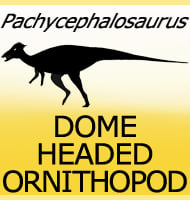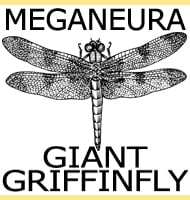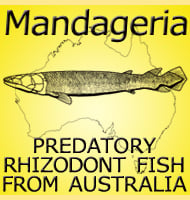In Depth
One of the troodonts, Byronosaurus aquired its name after being named after Byron Jaffe, a supporter of the American Museum of Natural History Paleontological Expeditions.
One of the unearthed skulls of B. jaffei is the best persevered skull specimen of any troodont, and shows two adaptions that are unique among the currently known troodonts. The teeth of Bryonosaurus are needle like and without serration, unlike the serrated teeth of its other troodontid brethren. This adaptation suggests that Byronosaurus may have focused upon smaller prey animals like lizards and invertebrates. The second important feature is that the nasal passage connects with the antorbital fenestra suggesting a highly developed sense of smell. Such an adaptation would have proven very useful in hunting small prey items hidden from view.
Another interesting fossil discovery relating to Byronosaurus is two juvenile skulls found in the nest of the oviraptorosaurid Citipati. There are two predatory theories for their presence there, either the citipati parents raided a Byronosaurus nest to feed their young, or the Byronosaurus juveniles were the ones doing the raiding. A third possibility is that Byronosaurus were nest parasites, as eggshell that was found attached to the juveniles is like the other oviraptosaur eggs. A modern day version would be a cuckoo laying one of its own eggs in the nest of different bird species. Of course this is not absolute proof that nest parasitism occurred in Byronosaurus, but it raises an interesting possibility of how past creatures interacted with one another beyond just predator and prey.
Further Reading
– A new troodontid theropod from Ukhaa Tolgod, Mongolia. – Journal of Vertebrate Paleontology 20(1):7-11. – M. A. Norell, P. J. Makovicky & J. M. Clark – 2000. – Osteology and relationships of Byronosaurus jaffei (Theropoda: Troodontidae). – American Museum Novitates 3402: 1–32. – O. J. Makovicky, M. A. Norell, J. M. Clark & T. E. Rowe – 2003. – Estimates of body size and geological time of origin for 612 dinosaur genera (Saurischia, Ornithischia). – Florida Scientist 69 (4): 243–257. – R. Montague – 2006. – The perinate skull of Byronosaurus (Troodontidae) with observations on the cranial ontogeny of paravian theropods. – American Museum Novitates, 3657: 51 pp. – G. S. Bever & M. A. Norell – 2009.









